Enjoy Kamakura’s Autumn Colors Together With Its History and Culture

In 1185, Kamakura became the center of political power when Minamoto no Yoritomo established the Kamakura Shogunate. As a historic city with many temples and shrines associated with samurai, Kamakura embodies the legacy of the warrior government. The temples and shrines, where samurai and commoners once prayed for good luck in battles, protection from misfortune, and family safety, create a sense of otherworldly tranquility. The temple grounds and mountains have been filled with various flowers and trees, beautifully changing colors with each season. In autumn, famous gardens take on a deep crimson, creating a scene of peaceful beauty.
Consider exploring these famous autumn foliage spots to appreciate Kamakura’s rich natural beauty and historical buildings!
Admire Autumn Foliage in an Earthly Paradise at Hasedera Temple (Best viewing: late November to mid-December)

This temple, founded in 736, is adorned with seasonal flowers and trees throughout the year. In Buddhism, the Pure Land was traditionally believed to be located in the west, and Hasedera, where flowers bloom all year, has been known as "Kamakura’s Western Paradise." The temple's two gardens with ponds create a mystical view as the surrounding autumn leaves reflect on the water. From the elevated vantage point, you can enjoy sweeping views of Kamakura’s townscape and Yuigahama Beach while strolling through the scenic overlook.

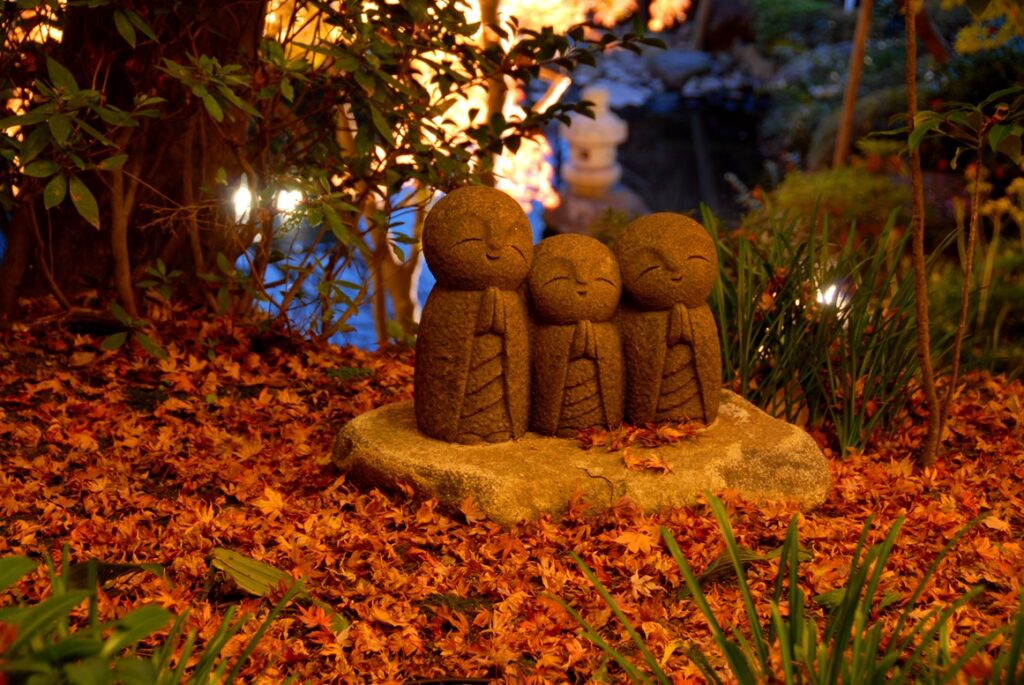
Autumn Leaves Framed by a Round Window: Meigetsu-in Temple (Best viewing: mid-November to early December)

Meigetsu-in Temple, founded in 1160, is renowned for the view of its garden’s autumn foliage through the round “window of enlightenment” in the main hall. Visitors can enjoy a framed scene that resembles a beautiful painting. During peak season, the temple grounds are vividly colored in red and gold, and the normally restricted garden behind the main hall is opened to the public. Although it’s a temple famous for its hydrangeas, it also offers a tranquil autumn atmosphere. Enjoy a harmonic display of historic architecture and natural beauty!
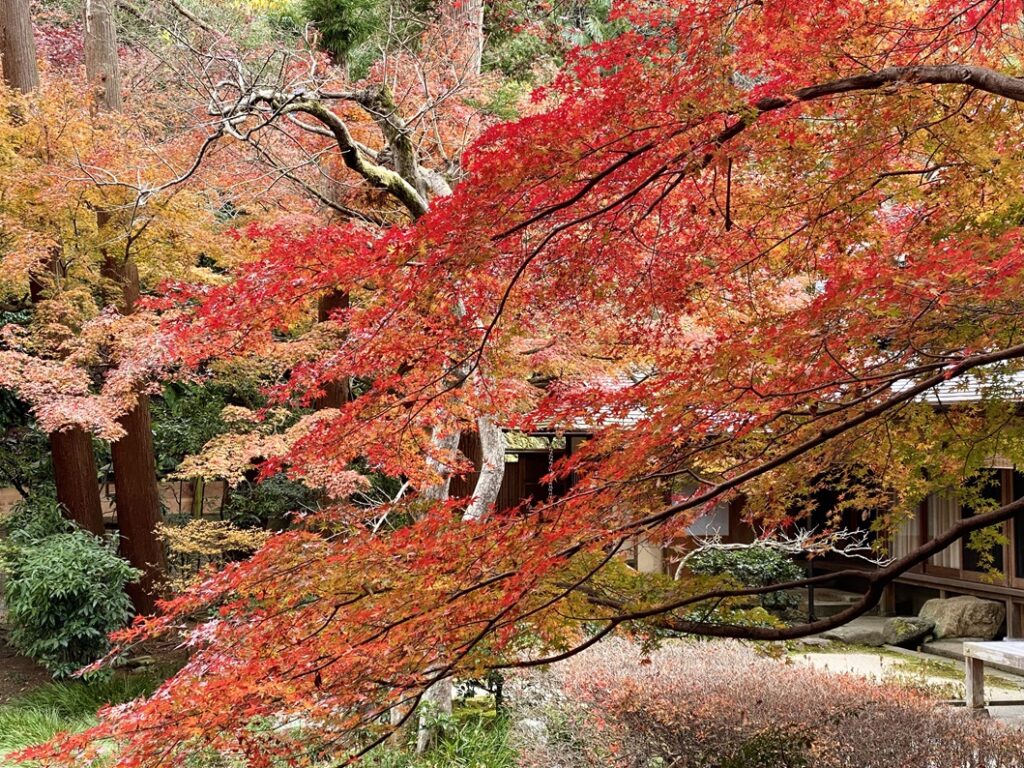


Autumn Foliage at a Heavenly Power Spot: Kencho-ji Temple (Best viewing: mid-November to early December)

Founded in 1253, Kencho-ji is one of Kamakura’s top Zen temple. The temple grounds hosts historical structures, such as the Dharma Hall and Buddha Hall, alongside beautiful gardens, which create a poetic scene with the autumn leaves. The approach to Hansobo, a shrine located at the back of the temple grounds and dedicated to a protective tengu deity, forms a tunnel of autumn colors, making for a scenic stroll. From Hansobo, you can take in a panoramic view of Kamakura and Sagami Bay. It’s known as a heavenly "power spot" and is a must-see for fall scenery!
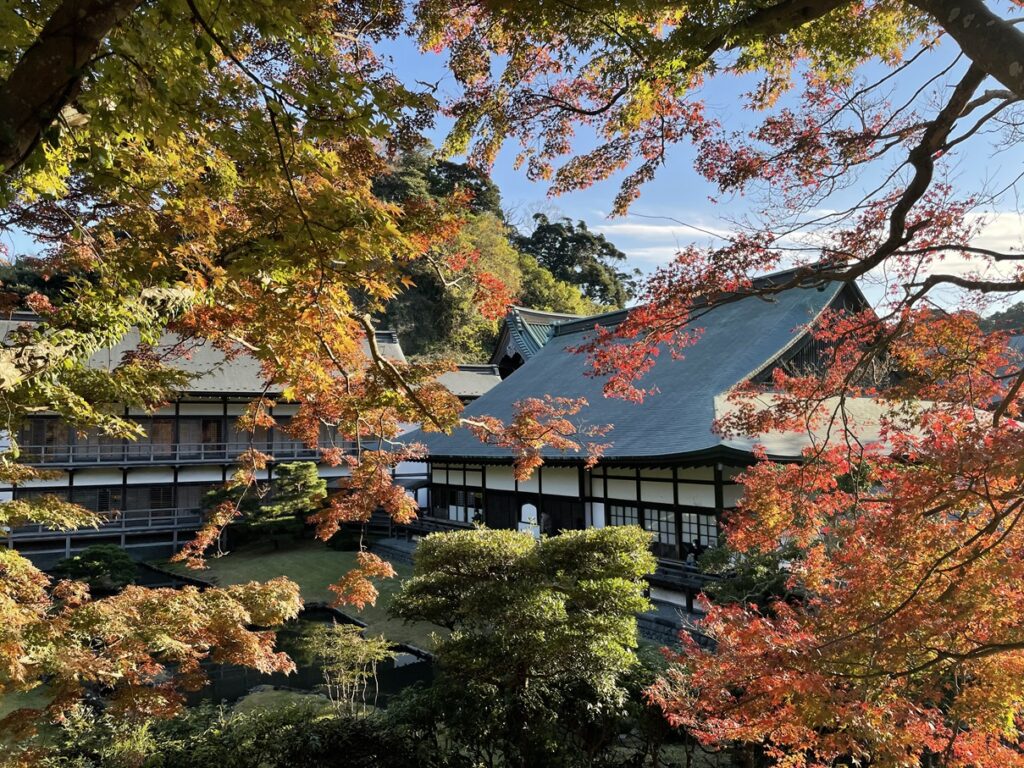
Autumn Leaves with Samurai History at Myohonji Temple (Best viewing: late November to early December)

Founded in 1260, this is one of the oldest temple of the Nichiren sect. It is located close to Kamakura’s city center and yet is surrounded by rich natural beauty. In late autumn, visitors can enjoy the foliage in a peaceful environment. The temple served an important role during the establishment of the Kamakura Shogunate, and it houses many historical buildings related to the Hiki clan, who lost a power struggle against the Hojo clan in 1203. The path from the main gate to the main hall is especially scenic in fall season, as is the area around the main hall, bathed in red and gold leaves.

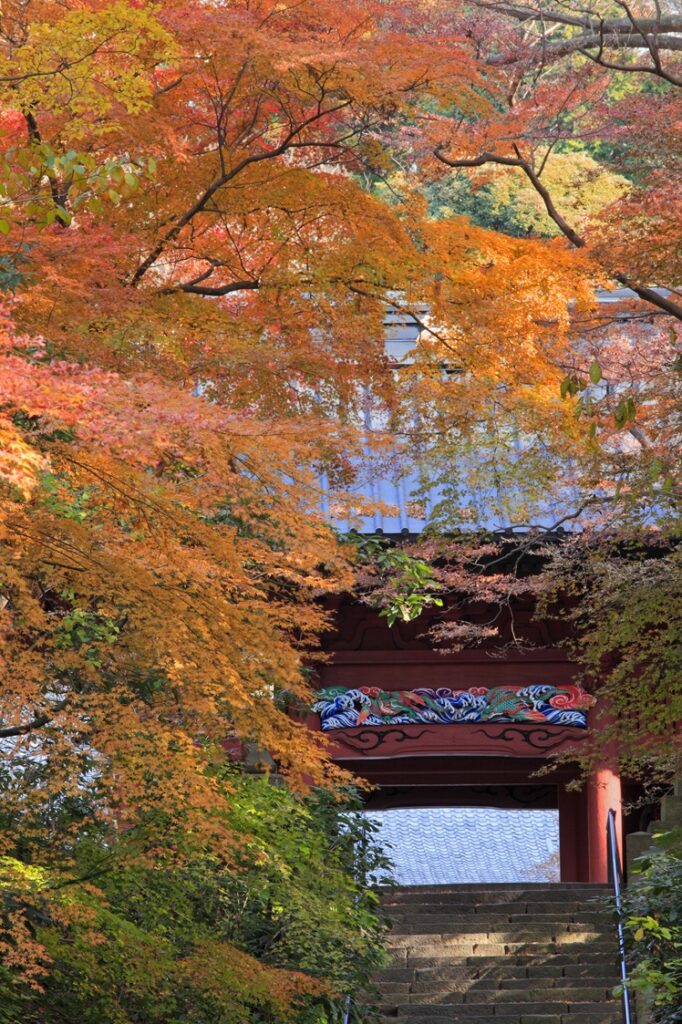
Autumn Colors Adorn a Medieval Kamakura Sanctuary: Kakuonji Temple (Best viewing: late November to early December)
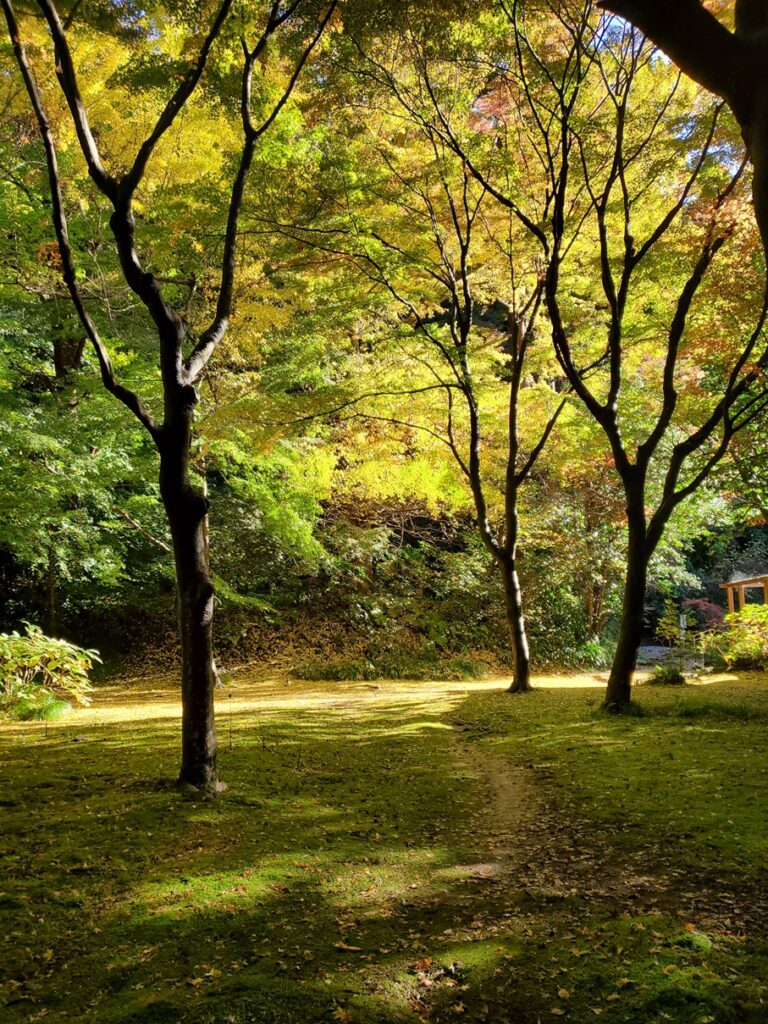
画像:覚園寺提供
Kakuonji was founded in 1218 by Hojo Yoshitoki as Okura Yakushi-do and later developed by Hojo Sadatoki with the wish of preventing further Mongol invasions. The current halls and statues were rebuilt by Ashikaga Takauji in 1354.
While this temple belongs to the Shingon sect, it features architecture influenced by Zen style. The grounds exude quietness with the harmony of the Buddha statues, halls, and natural surroundings, embodying a samurai aesthetic characteristic of Kamakura. The lush greenery changes colors in autumn, make it a famous spot for fall colors.

画像:覚園寺提供

画像:覚園寺提供
Autumn Leaves Paint the History of a Tragic Prince: Kamakura-gu Shrine Otonomiya (Best viewing: mid-November to early December)
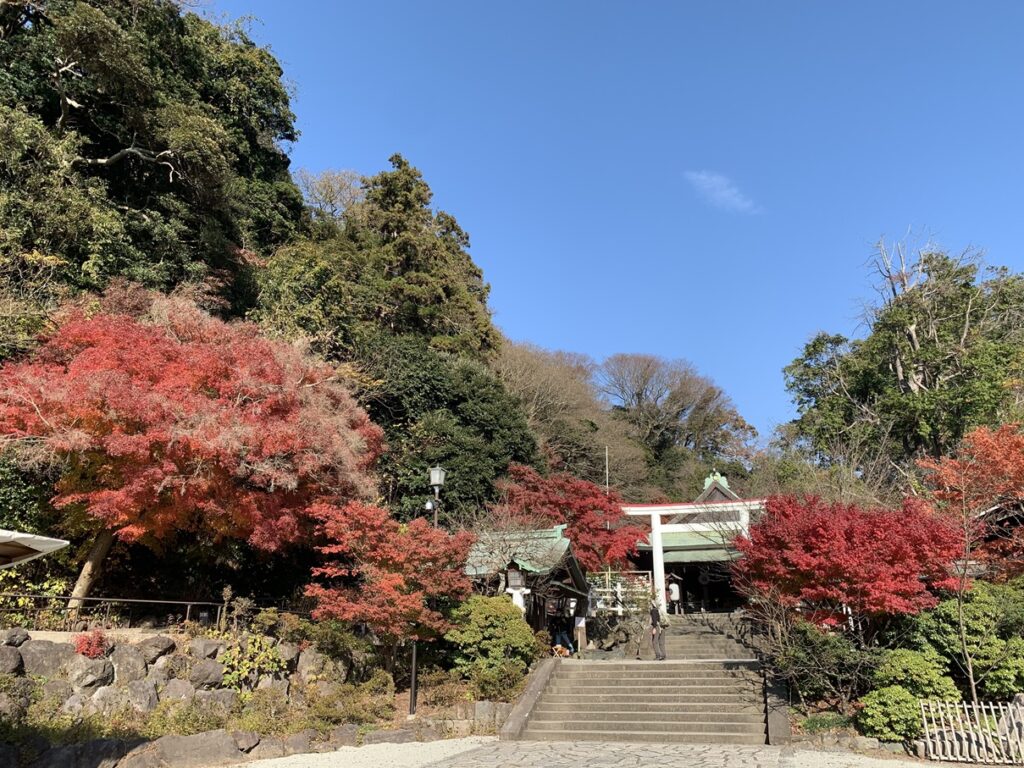
One of the 15 shrines of the Kenmu Restoration, Kamakura-gu was erected by Emperor Meiji in 1869. It was formerly a government-sponsored middle-rank shrine and is dedicated to Prince Moriyoshi, son of Emperor Go-Daigo.
The vibrant “crimson ceiling” trees, transferred from Kyoto, and the grand “jumbo maple tree” in the shrine garden can be viewed through mid-December.


See Historical Scenery of the Kamakura Period at Zuisen-ji Temple(Best viewing: early to late December)
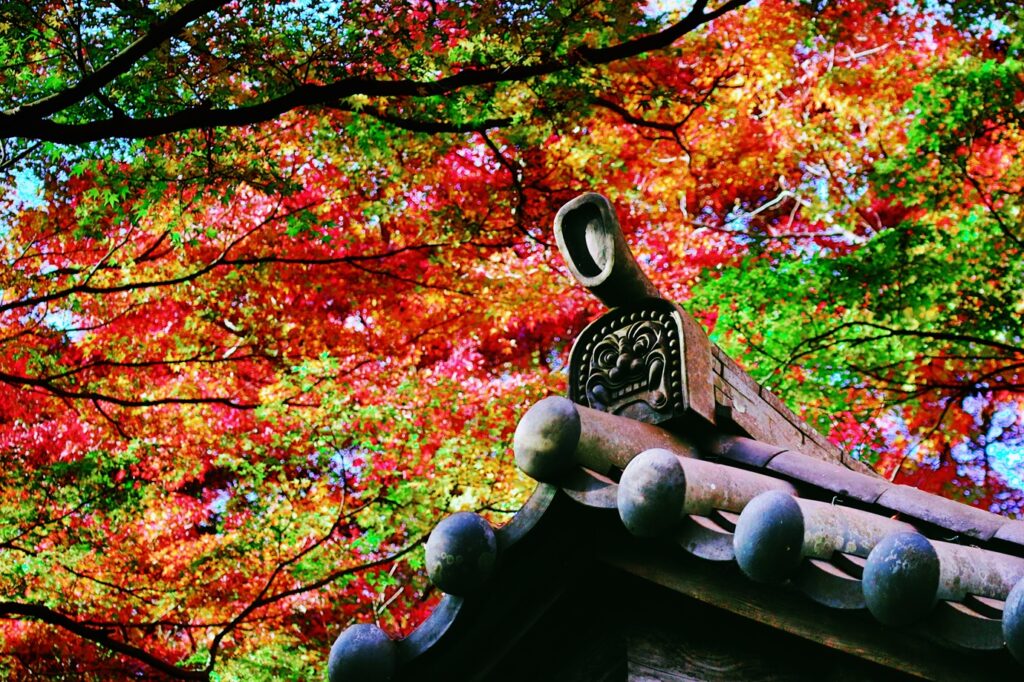
Photo : Kamakura City Tourist Association
Founded in 1327 in association with the Kamakura Shogunate, Zuisenji is a prestigious temple surrounded by mountains with autumn leaves that resemble a colorful folding screen. Known as the “Flower Temple” for its blooms throughout the year, it features a garden behind the Buddha Hall, restored in 1970 and designed by the temple’s founder, Zen monk and garden designer Muso Soseki, now a national scenic site. The Tennyodo cave, carved out of the Kamakura stone for Zen meditation, offers an impressive view.
Enjoy the fall colors while reflecting on the aesthetics of the Kamakura in this garden with views of Mt. Fuji as well as Mt. Tendai and Mt. Kimpei.

Photo : Kamakura City Tourist Association

Photo : Kamakura City Tourist Association


